
Artificial intelligence is an integral part of many industries throughout the world of business, including marketing. But how are marketers incorporating AI in marketing? What does it look like? While digital marketers have many examples of how AI is in action in marketing industry, 98% of marketers consider personalization to improve customer relationships.
Personalization is an important part of a well-performing marketing strategy as revealed from the following personalization stats:
- Increase in 20% in sales through campaigns that provide a personalized experience.
- Increase in revenue of up to 760% through segmented campaigns.
- Personalized emails deliver transaction rates that are 6 times higher.
Not just this, we all appreciate the personalized experience. Whether it is for your coffee at CCD or a personalized workout at the gym, or simply any technology that gives you a personalized experience. A personalized experience establishes goodwill and brings a smile to your face. Now the next step in personalization for digital marketers – hyper-personalization (to create an extremely personalized strategy).
Personalization Vs. Hyper-Personalization?
Hyper-personalization is a new level of personalization. It uses artificial intelligence (AI) and real-time data to deliver highly contextual and more relevant service to each user. AI is reinventing ways to get you closer to deliver more relevant content, products, and service information as per every user. It has been said by marketers that AI helps them deliver more targeted campaigns and create more “human” content.
Personalization is simply sending an email from a real person containing a recipient’s name in the subject line and the text, describing the services to them. Hyper-personalization is more advanced than this, it includes valuable points (that are analyzed by intelligent machines like the purchase history, when were maximum searches made, purchasing behavior of products on discount —not just through profiles or data that customers provide when they sign up) to improve the communication with that specific prospect.
For example, Myntra has a strong digital presence through hyper-personalization. It sends notifications to Myntra app users on the basis of what’s in their cart, what they usually buy, and what is in their wishlist. This is like a chase for users to hurry up to buy what they want to.
Hyper-personalization analyzes factors like customer demographics, location, the time of the most frequent purchases, and other preferences that have proactive communication with customers. This creates truly dynamic content. For example, the content is produced when a lead clicks the call-to-action button on your landing page/app/email. AI processes the data about potential customers and produces personalized output to increase the chances of conversion. AI can collect information about users with the help of data management platforms collecting second and third-party data. Also, some AI-backed tools like Buzzsumo, SEMRush, etc, give a detailed analysis of the traffic data, backlinks, clickstream behavior and a lot more giving you an opportunity to plan your marketing strategy.
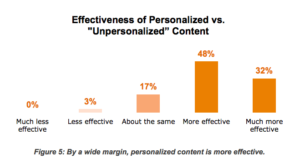
How to Prepare for Hyper-personalization?
-
Social Listening to Know Your Customers
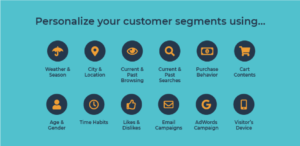
It all starts with collecting information. Collect as much data as possible to create buyer personas. Start with actively listening to and know your audience. Define their likes and dislikes. Get an in-depth look at the pain points. And then sort out users that fall under each category. With ProofHub, you can schedule your events and milestones in order to better plan your campaign. Treat each prospect as an individual and aim to build trust with each. You can also engage with top influencers to build engagement around their brand. There’s a wide range of platforms if you are planning to do this on a large scale. These platforms offer paid and free tools to track, monitor, and notify you when conversations about you are happening. Here’s a quick list:
- Google alerts
- Hootsuite
- Followerwonk
- Social mention
- Mention
-
Engage a Customer With the Right Message at the Right Moment
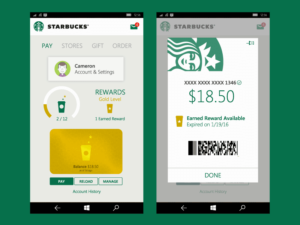
You should hyper-personalized customer interactions at the right time on the basis of data collected. For example, Starbucks has made tremendous progress in hyper-personalization. Starbucks provides a personalized experience for each user. It engages loyalty program members with personalized games on email and mobile.
Alike, if you know your user has used a discount card sometimes in the past, you can send a personalized message through tools like WebEngage that will create the message advertising a discount on the product that was viewed + added to the cart by that particular user. Thus, creating a hyper-personalized experience.
-
Automate tasks of your Marketing Team
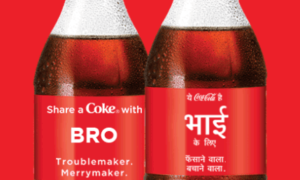
Hyper-personalization can be almost impossible if you do it manually. From collecting data from the database with thousands of contacts to prioritizing the segmented results (based on several factors), it can all be very tedious. This can be possible through advanced reporting abilities as well as excellent data analysis that is possible only via automation. Thus, investing in automation technology is the need of hyper-personalization.
For example, Coca-Cola’s “Share A Coke” campaign is remarkable where thousands of people’s names were printed on the label of the beverages. People were encouraged to share their drink with someone else and spread the message by using the hashtag #shareacoke.
-
AI-Powered Personalized Content
The secret to great email marketing today is sending tailor-made (hyper-personalized) content to the right people at the right time. Triggered email marketing is an example of personalized content. Spotify’s AI-powered personalization method helps customize shopping experiences, qualify leads, and streamline the customer experience. Their emails are a lot more than just addressing the user. On average, personalized email marketing improves click-through rates by 14% and increases conversions by 10%. With personalized emails, you can select which part of the body of the email to personalize and you can use all your rich imagination to make emails unique.
AI-enabled email marketing systems can help create a more personalized experience that produces real growth, whereas, it has been only personalized it wouldn’t have been on the basis of personalized music preference, will not know you’re a fan of Lady Antebellum, and will not send an email about live events of your favorite artists.
If you have a record of your customer’s purchase history or activities history online and offline, then you can hyper-personalize your emails.
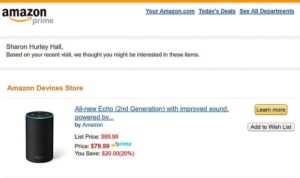
- You can refresh their memory by reminding them what pages or websites they visited and they loved the most. For example, Amazon sends follow up emails to alert customers about deals/pages they have visited.
- Send them personalized offers based on their history. For example, mocking up an offer for their visitors on what categories they browse. Or when a customer puts off their cart after adding products, you can send a discount, that will act as a trigger to the targeted customer. It should be all automated.
- Don’t forget to hyper-personalize your subject lines, like Grammarly – Your Weekly Progress Report, Good Job! You’ve Accomplished 96% of Your Weekly Plan! – by Lingualeo, A task has been completed – by ProofHub.
- Real-time data recommendations on email. For example, when you cross the border between two European countries, your service provider of mobile network will send an email about the new tariffs, weather reports, etc.—that’s hyper-personalization.
The Takeaway
I hope implementing the above methods of hyper-personalization will help you drive your marketing efforts, drive engagement, brand loyalty that comes with reaching out to customers personally. Hyper-personalization is the need of every business to thrive in the long run, it is the trend of 2019 and beyond.


